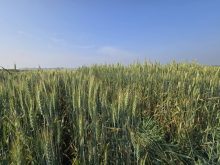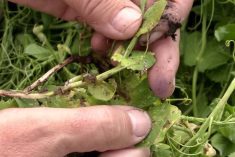Late blight was confirmed in a field of potatoes near Carman Aug. 18 – the fourth infection detected in Manitoba this summer, said Vikram Bisht, a plant pathologist with Manitoba Agriculture, Food and Rural Initiatives (MAFRI).
Last year late blight – the fungal disease behind the Irish potato famine of the 1840s – was much wider spread because it was so wet.
“Conditions (this year) aren’t really great for late blight spreading because of the dryness and heat that we have, but within the canopy there is plenty of moisture if protected from the wind,” Bisht said. “Usually the open fields don’t have the problem.”
Read Also

Still hard to predict precise fertilizer payback
Despite decades of advances, international research finds no clear answer for where and when adding nutrient will fail to boost growth.
The first late blight infection this year was identified in a potato field near Holland Aug. 2. Infections were confirmed in a field west of Carberry and near Winkler Aug. 17.
Most farmers are applying fungicides to their potatoes every five to seven days to protect them from late blight infection, he said. Farmers with infected fields, or those beside infected fields, should apply a fungicide with curative activity, he said.
Although potato harvest is getting closer, fields need to be protected from late blight for several more weeks, Bisht said.
“The infection on the leaves is not a big issue, it’s infection on the tubers, which becomes a problem for storage so they can’t let up on a five-day schedule or seven if conditions are OK,” he said.














